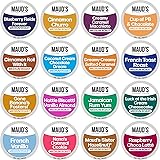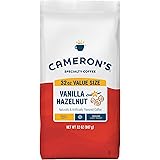The Allure of Siphon Coffee: Why Brew with a Vacuum Pot?
Brewing coffee with a vacuum pot is more than just a method; it is an engaging spectacle of scientific principles at play, culminating in an exceptionally clean and aromatic cup. The unique design, involving two glass chambers and a precisely controlled heating element, creates a full immersion environment. This allows for thorough and consistent extraction of the coffee’s most desirable flavors and aromas. Imagine if your coffee could showcase its full potential, free from the harshness often associated with other brewing styles; this is precisely what siphon coffee delivers.
Furthermore, the visual appeal of the siphon brewer makes it a captivating centerpiece in any kitchen. Watching the water ascend into the upper chamber, where it mingles gracefully with the coffee grounds, then descends back down as a perfectly brewed beverage, transforms coffee making into an artistic performance. Beyond its aesthetic charm, the vacuum pot method is celebrated by specialty coffee connoisseurs for producing a brew with a remarkably clean body and vibrant flavor notes, often emphasizing the delicate complexities of your chosen beans.
Essential Equipment for Brewing Vacuum Pot Coffee
To embark on your journey into the world of vacuum pot coffee, precise equipment is paramount. Gathering these items before you begin will ensure a smooth and successful brewing process, consistent with the detailed steps outlined by Paul. These are not merely tools; they are integral components that contribute to the unique extraction capabilities of this method.
- Siphon Coffee Brewer (Siphon Rig): This typically includes a bottom beaker for water, a top beaker for coffee grounds, a stand with a clamp to hold them securely, and a filter mechanism (often cloth or permanent).
- Butane Burner: A dedicated heat source is crucial for controlling the precise temperature required for the brewing cycle. While some rigs might use an alcohol lamp, a butane burner provides superior adjustability.
- Digital Scale: Accuracy in measurements is non-negotiable for specialty coffee. A scale allows you to measure both coffee grounds (specifically 30 grams) and water (400 grams) with utmost precision, ensuring repeatable results.
- Timer: Exact brewing durations are key to optimal extraction. A timer helps you adhere to the specified immersion times, crucial for flavor development.
- Coffee Grinder: A burr grinder is highly recommended for achieving the desired grind consistency, which Paul describes as “somewhere in between table salt and sea salt,” a medium grind.
- Freshly Roasted Coffee Beans: Approximately 30 grams of your favorite beans. Quality beans are the foundation of any exceptional cup.
- Hot Water Source: Pre-heating 400 grams of water to approximately 200 degrees Fahrenheit, just below boiling, significantly reduces brewing time and ensures temperature stability.
Preparing Your Siphon Setup: The Foundation of Flavor
The success of your vacuum pot coffee brewing hinges on meticulous preparation. Proper setup ensures that the intricate physical processes of the siphon method can unfold perfectly, leading to a superior cup. It is a fundamental stage that lays the groundwork for impeccable flavor extraction.
Optimal Grind Size and Water Temperature
Achieving the correct grind size is critical for siphon coffee. Paul suggests a medium grind, comparable to the texture found “in between table salt and sea salt.” If the grind is too fine, it can lead to over-extraction and a bitter taste, potentially clogging the filter. Conversely, a grind that is too coarse will result in under-extraction, yielding a weak and sour brew. Therefore, aim for consistency to facilitate an even extraction.
Water temperature also plays a pivotal role. Heating your water to around 200 degrees Fahrenheit, just under the boiling point, is ideal for the initial pour. This temperature range is crucial because it promotes efficient extraction of soluble compounds from the coffee without scalding the grounds, which can introduce undesirable burnt flavors. Imagine if you were trying to cook a delicate ingredient; temperature control ensures it reaches its peak without compromise.
Securing the Filter Mechanism
Before adding water, you must properly secure the filter in the bottom of the upper beaker. This small, yet essential, step prevents coffee grounds from entering the lower chamber during the drawdown phase. Utilize the small spring mechanism to ensure the filter is tight and remains securely in place throughout the brewing process. A loose filter can result in a muddy cup, detracting from the characteristic clarity of siphon coffee.
Step-by-Step Guide: Mastering the Vacuum Pot Brewing Process
Following a precise sequence of actions is paramount when brewing with a vacuum pot. Each step is designed to leverage the unique physics of the siphon, ensuring a balanced and flavorful extraction. Paul’s guidance in the video above provides the practical foundation, and these expanded explanations offer additional clarity.
1. Add Hot Water to the Bottom Beaker
Carefully pour 400 grams of hot water, preheated to approximately 200 degrees Fahrenheit, into the bottom beaker of your siphon rig. Utilizing pre-heated water accelerates the boiling process, ensuring stability and consistency in your brewing timeline.
2. Ignite the Burner and Position the Top Beaker
Place the butane burner directly underneath the bottom beaker and ignite it, adjusting the flame to a high setting. Immediately after lighting the burner, set the top beaker loosely onto the bottom beaker. It is crucial not to create a seal at this point; allow some space for steam to escape as the water begins to boil. This initial phase focuses on bringing the water in the lower chamber back to a vigorous boil.
3. Grind Your Coffee
While the water in the bottom beaker heats, take this opportunity to grind your 30 grams of fresh coffee beans. As previously discussed, aim for a medium grind, resembling fine sand or coarse table salt. Freshly ground coffee is essential for optimal flavor extraction.
4. Seal the Top Beaker and Initiate Water Transfer
Once the water in the bottom beaker reaches a rolling boil, firmly push the top beaker down to create a tight seal. As the water boils, the pressure inside the bottom beaker increases, forcing the hot water to ascend through the siphon tube into the upper beaker. This mesmerizing transfer is a hallmark of the siphon method. As the water transfers, slightly reduce the burner’s heat; you want the water in the upper chamber to be hot, but not violently boiling, to ensure a gentle immersion for the coffee.
5. Introduce the Coffee and Begin Immersion
After the water has fully transferred to the top beaker, it is time to add your freshly ground 30 grams of coffee. Simultaneously, start your timer. Immediately stir the coffee ten times to ensure all grounds are fully saturated and evenly distributed in the hot water. This initial agitation is vital for initiating uniform extraction and preventing dry spots in the coffee bed.
6. Maintain Optimal Heat During Brewing
For the next minute and 45 seconds, carefully monitor the heat from the burner. The goal is to maintain a consistent temperature in the upper beaker without excessive agitation. You do not want the coffee to boil vigorously in the top chamber, as this can lead to over-extraction and bitterness. However, sufficient heat from the bottom beaker must persist to maintain the pressure differential, preventing the brewed coffee from prematurely returning to the lower chamber.
7. Conclude Brewing and Initiate Drawdown
Precisely at the 1 minute and 45 second mark on your timer, simultaneously remove the heat source (turn off the burner) and gently stir the coffee in the top beaker five more times. This final stir ensures any floating grounds are re-submerged and helps prepare the coffee bed for an even drawdown. The removal of the heat immediately begins the drawdown process.
8. The Drawdown Process: A Visual Confirmation
As the heat source is removed, the air in the bottom beaker cools, causing the pressure to decrease and creating a vacuum. This vacuum effectively draws the brewed coffee from the upper beaker, through the filter, and back down into the lower chamber. This fascinating filtration process should take approximately 1 minute. A well-executed drawdown will leave a distinct dome of spent coffee grounds at the bottom of the top beaker, signifying an even extraction and filtration.
9. Serve Your Exquisite Siphon Coffee
Once the drawdown is complete, typically around the 2 minute and 45 second mark on your timer (from when you added the coffee), you can carefully remove the top beaker. The beautiful, clear coffee in the bottom beaker is now ready to be served. Experience the unique clarity and nuanced flavors that only vacuum pot coffee can offer. Imagine savoring a cup where every note of your chosen bean truly sings.
Troubleshooting Common Vacuum Pot Coffee Challenges
Even with precise instructions, challenges can sometimes arise when brewing vacuum pot coffee. Understanding these common issues allows for effective adjustments, ensuring consistent quality. This proactive approach can transform a good cup into an exceptional one, refining your brewing expertise.
Flavor Imbalance: Bitter or Sour Coffee
If your coffee tastes excessively bitter, it often indicates over-extraction. This can result from a grind that is too fine, water that is too hot, or an extended brewing time. Conversely, a sour or weak taste points to under-extraction, possibly due to a coarse grind, insufficient water temperature, or too short a brewing duration. Consequently, making small, incremental adjustments to your grind size and brewing time will typically resolve these flavor issues.
Inconsistent Drawdown
A slow or stalled drawdown can be frustrating. This problem often stems from a clogged filter, which might occur if your grind is too fine or if the filter itself is not clean. Ensuring your filter is spotless and checking your grind size for excessive fineness are crucial steps. Furthermore, if the seal between the beakers is not perfect, air might slowly leak in, reducing the vacuum effect and slowing the drawdown. Always double-check that the top beaker is firmly seated.
Water Not Ascending
Should the water fail to ascend into the top beaker, it generally indicates insufficient heat from the burner or an improper seal between the two chambers. Ensure your burner is at a high enough setting to bring the water to a rolling boil and that the top beaker is securely placed to form a tight seal. The pressure differential is fundamental for the water transfer, so addressing these points will restore functionality.
Unlocking Flavor: The Science Behind Vacuum Pot Coffee
The magic of vacuum pot coffee brewing is deeply rooted in fundamental scientific principles, specifically thermal expansion and vacuum pressure. Understanding these concepts demystifies the process and enhances appreciation for this unique brewing method. This scientific foundation explains why siphon coffee often boasts a remarkably clean and vibrant flavor profile.
Initially, heat from the burner causes the water in the lower beaker to boil and turn into steam. This steam significantly increases the pressure within the sealed lower chamber. As pressure builds, it physically pushes the hot water upwards through the siphon tube into the upper chamber, where the coffee grounds reside. This creates a full immersion brewing environment, ensuring that all coffee particles are uniformly saturated, which is essential for even extraction.
The brewing phase in the upper chamber is characterized by controlled immersion at a stable temperature. When the heat source is removed, the steam in the lower beaker rapidly cools and condenses back into water. Consequently, this cooling creates a vacuum, a region of significantly lower pressure, in the bottom chamber. This vacuum then effectively pulls the brewed coffee back down through the filter and into the lower beaker, leaving the spent grounds behind. This precise mechanism results in a highly filtered, clean cup of coffee, free from sediment and bitterness, highlighting the inherent characteristics of the coffee bean.







